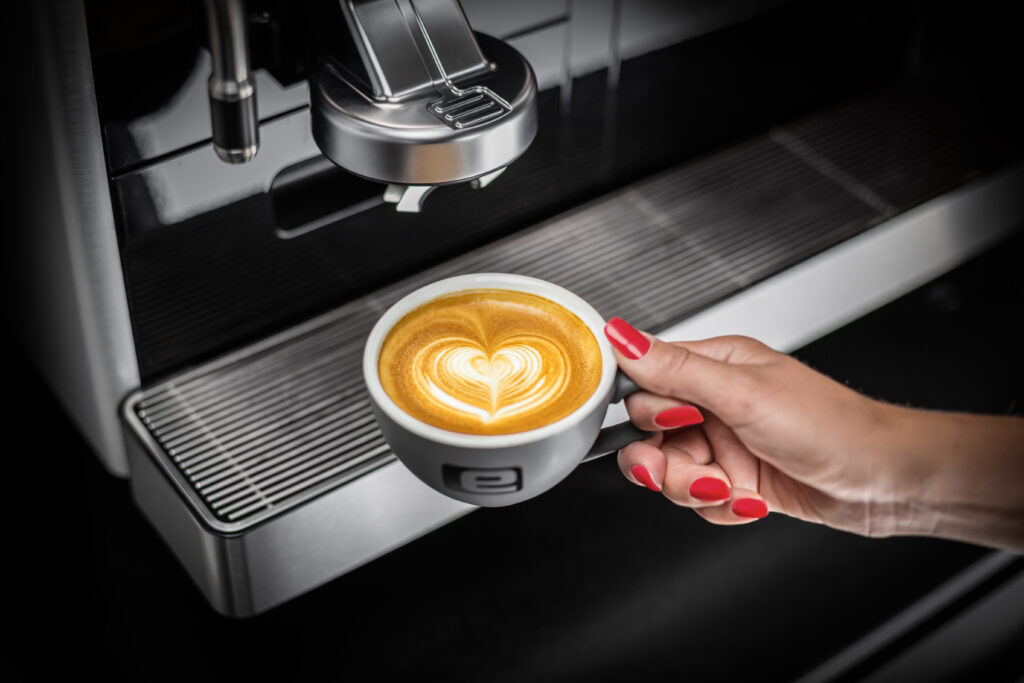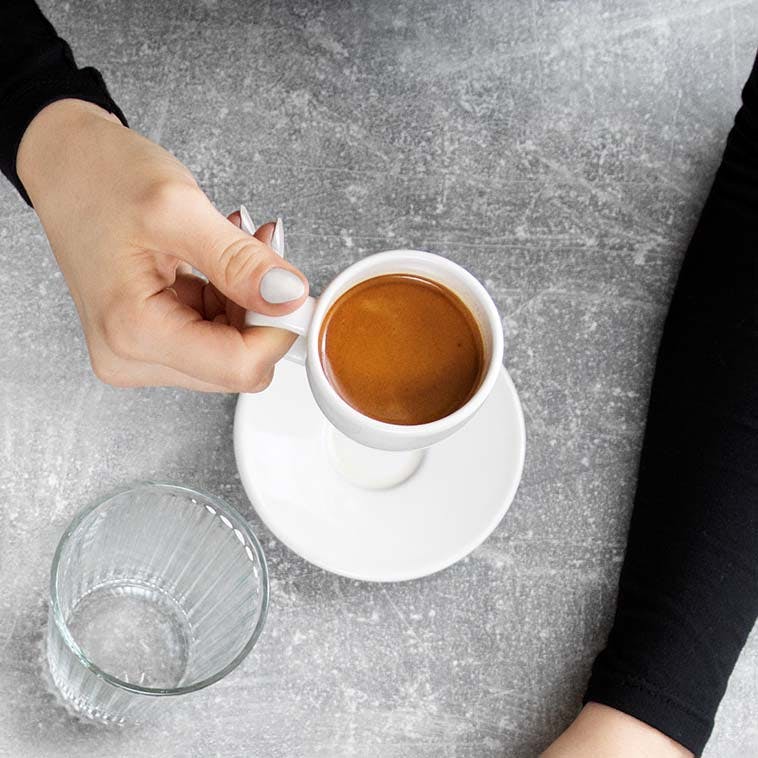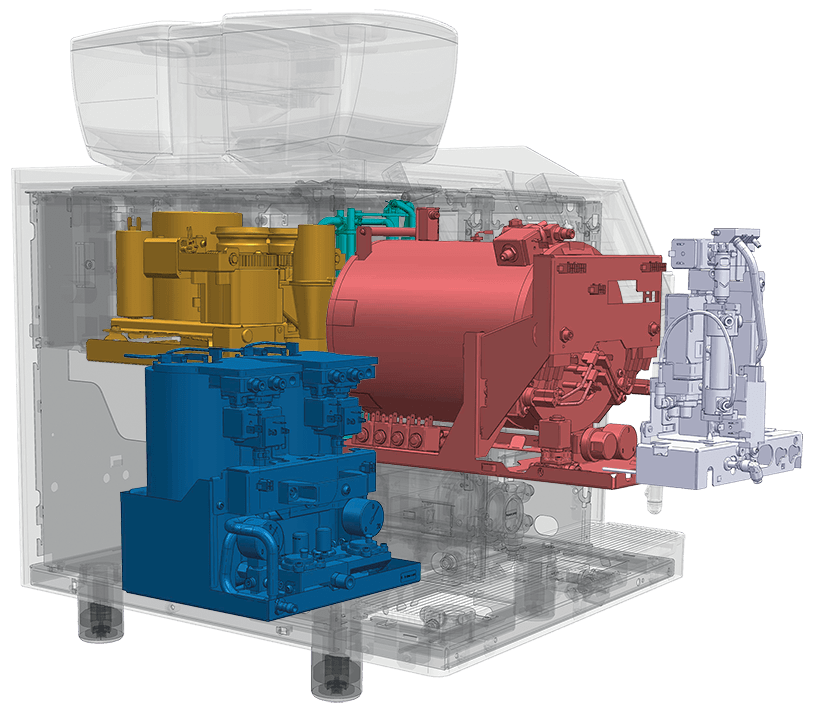Cappuccino vs Latte
Cappuccino vs latte what are the differences?
Summary
A cappuccino and a latte are both types of espresso-based coffee drinks, but they have distinct differences in their preparation and ingredients. Some opf which we will explain below. A cappuccino for example typically consists of 1/3 espresso, 1/3 steamed milk, and 1/3 foam. It has a stronger coffee flavour and a thicker layer of foam on top.
A latte, in contrast typically consists of 1/6 espresso, 4/6 steamed milk, and 1/6 foam. It has a milder coffee flavour and more steamed milk than a cappuccino, which gives it an overall creamier texture. In summary, a cappuccino is a stronger and foamier coffee, while a latte is milder and creamier.
What exactly does a cappuccino consist of?
A traditional cappuccino is made with three main ingredients: espresso, steamed milk, and milk foam.
- Espresso: The base of the drink is made using a shot or two of espresso, which is a strong, concentrated coffee made by forcing hot water through finely ground coffee beans.
- Steamed Milk: The espresso is then combined with steamed milk, which is milk that has been heated and frothed using a steam wand on an espresso machine. This adds a creamy texture to the drink.
- Milk foam: The final component of a cappuccino is the milk foam, which is created by frothing milk with a steam wand. It’s added on top of the steamed milk. The foam provides a texture to the drink.
Some variations of cappuccinos use flavoured syrups, cocoa powder or cinnamon as toppings.
What is in a Latte?
A traditional latte is made with three main ingredients: espresso, steamed milk, and a small amount of milk foam.
- Espresso: The base of the drink is made using a shot or two of espresso, which is a strong, concentrated coffee made by forcing hot water through finely ground coffee beans.
- Steamed Milk: The espresso is then combined with steamed milk, which is milk that has been heated and frothed using a steam wand on an espresso machine. This adds a creamy texture to the drink.
- Milk foam: The final component of a latte is the milk foam, which is created by frothing milk with a steam wand. It’s added on top of the steamed milk, but the foam layer is much thinner than in cappuccino.
Some variations of lattes use flavored syrups, cocoa powder or cinnamon as toppings, and some baristas may add latte art to the top of the drink. Need a coffee machine? Check out our commercial coffee machines.
What is better for you? a Cappuccino or Latte?
Whether a cappuccino or a latte is better for you depends on your dietary needs and personal preferences. In terms of calories, cappuccinos tend to have fewer calories than lattes because they have less steamed milk and more foam.
In terms of caffeine content, both cappuccinos and lattes are made with espresso, which is a concentrated form of coffee and contains a significant amount of caffeine. A standard cappuccino and a latte usually have similar caffeine amount, as a cappuccino is made with one shot of espresso and a latte is made with one or two shots of espresso.
In terms of taste, cappuccinos tend to have a stronger coffee flavour and a thicker layer of foam, while lattes tend to have a milder coffee flavour and a creamier texture.
Ultimately, it’s best to consider your dietary restrictions, health goals, and taste preferences when deciding which one to choose. See our range of office coffee machines.
What is Latte art?
The term Latte art is the practice of pouring steamed milk into a fresh shot of espresso to create designs and patterns on the surface of the drink. The most common designs that people tend to use include hearts, rosettes, and leaves.
Latte art is typically created by skilled baristas who use the flow of steamed milk and the pour technique to make designs on the surface of the drink. They pour the steamed milk into the cup with espresso, using a special tool called a pitcher, while controlling the speed and angle of the pour to create different patterns. The barista can also use different pouring techniques to create different shapes and designs.
Latte art is not only a way to make a coffee visually appealing to customers, but it can simultaneously indicate the quality of the drink, as creating latte art requires a good foam with the right density and texture.
Why Eversys Though?
Consistent Coffee Quality
In-Cup quality
Technology
Eversys equipment is built in modules, ensuring rapid access for technical intervention with minimal downtime and reduced maintenance costs.
Eversys machines are equipped with two grinders allowing for two parallel recipes to be set up at a time, and you can even choose to dose some powder from each grinder and produce it through a singular extraction. The ventilation, which is set below the bean hoppers, drives out unwanted heat and moisture. Electronic control maintains consistency of product throughout the day.
The brewing chamber holds up to a significant 24 g of coffee, allowing for a wide range of brewing recipes. The Reverse extraction brewing system optimises powder efficiency as the espresso is produced.
The steam / water unit provides temperature consistency and unsurpassed productivity.
Milk is frothed with steam – like a traditional barista – through a set of reactors, ensuring optimal texture and taste.
The hydraulic module is dedicated to the sole production of coffee, 1.6 litres of water guarantee unfettered productivity.
E'levelling System
1.5-Step Programme
The Eversys e'API
More Features...
1. Grinding
Eversys designed ceramic blades driven by a powerful yet quiet motor, whose heat is cleverly channelled away from the coffee beans, to maintain their quality, via a set of fans. Electronic control maintains consistency of product throughout the day, ensuring optimal extraction at all times.
2. e'Levelling & Tamping
Automatic Levelling is the ability to initiate a movement to the brewing chamber, create a vibration which enable the powder in the chamber to spread more evenly, which leads to a better, more consistent extraction. The 24 -gram brewing chamber to facilitate single cycle large beverages is controlled by electronic tamping to guarantee consistent quality.
3. Temperature control
Dedicated coffee boilers, separate from the water/ steam boiler, provide productivity and temperature stability, essential parts of in-cup quality.
4. Brewing
Reverse gravity extraction vertical infusion optimises powder efficiency as the espresso is produced.
5. Milk Frothing
Milk is frothed with steam in the one-step system, promoting flavour as well as texture, mirroring the barista experience.
6. Creating
All products are pre-programmed to be dispensed in a consistent and efficient manner, placing seamless productivity and quality at the forefront of the customer experience.
Coffee Machines to Match any style.
Eversys espresso machines are trusted by the world’s finest coffee roasters, cafès, and restaurants for their reliability, durability, and timeless aesthetics.
Having in-house coffee from an automatic coffee machine is one of the most productivity-enhancing investments any business can make.
The Cappuccinos and Lattes you make can be a key profit driver for your business, which means that your coffee machine is perhaps one of the most important piece of equipment for your business.



